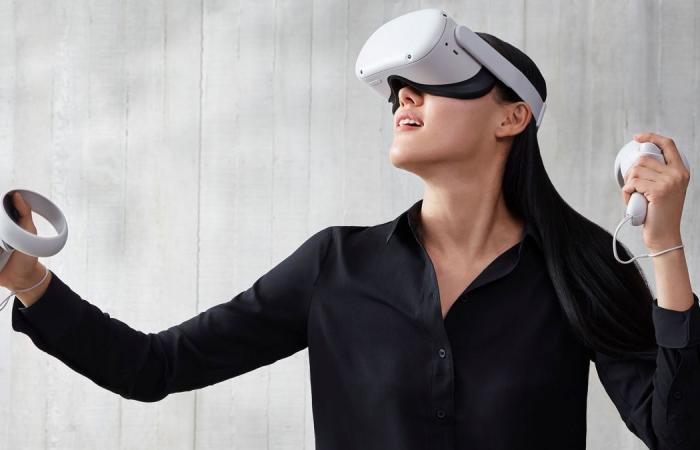Samsung in pairs with researchers from Stanford University has designed an extremely pixel-dense OLED screen, and the technology seems to be miles ahead of what we are used to today with resolutions on VR headsets.
As RoadtoVR writes in its article, the new OLED panels manage to pack 10,000 pixels on a single inch, in other words 10,000 PPI. To name a relevant yardstick: We went completely off the shaft in 2018 when Japan Display managed to squeeze in 1001 pixels on one inch when they made their VR-ready screen.
These are simply incredible numbers, and can completely change the way we experience VR.
Does that sound like big words? Well, the HTC Vive Pro has a PPI of 615, while the PSVR has a PPI of 386. Newer and sharper headsets like the HP Reverb and Oculus Rift S manage to push this number up somewhat, but not drastically – the headsets of the future, with this technology, will could make pixels invisible in VR games.
The improvements presented in this research stem from the use of “nanopatterened metasurface mirrors”, and completely change the underlying structure of OLED panels, so as to “optimize the extraction” of colors from sources of white light. Which in practice means that what usually happens in today’s OLED panels can be done in miniature.
The research specifies that this can be used for VR and AR, and also mentions “glasses and contact lenses”, which gives a certain impression of how compact and pixel-dense these new screens can be.
Is the red pill unavoidable?
What makes high resolution in VR difficult is the extremely short distance between the screen panel and your eyes. An 85-inch 8K TV can have a PPI of only 104, while a more pixel-dense 8K TV of 55 inches will have a PPI of 162. When it comes to VR headsets, it will be something completely different – and you need a much higher PPI numbers to match the TV resolutions in practice.
VR has taken great strides in recent years, but travel sickness, that you quickly get tired of playing for longer periods and less good solutions to keep track of movements of the head and arms are problems that must be solved before we end up with an experience approaching full utilization of the potential of the medium. Getting the pixel density above 10,000 is guaranteed to help with the feeling of realism, and as long as you can get there on the screen front, it may well be that the other problems have also been solved.
This also has a lot to say for AR. Although over the years a lot of smart glasses have appeared, the opportunity to fit AR technology in contact lenses will be something that really tilts it all to become a realistic technology in practice – if you disregard areas where it already works, as with home entertainment such as «Mario Kart Live» or games on Magic Leap One.
Whether it will be the case that everyone will want to wear AR contact lenses all day, in the same way that social and economic pressure has made us use smartphones every minute of every day, is another question.
These were the details of the news New OLED technology could revolutionize the VR headset of the future for this day. We hope that we have succeeded by giving you the full details and information. To follow all our news, you can subscribe to the alerts system or to one of our different systems to provide you with all that is new.
It is also worth noting that the original news has been published and is available at time24.news and the editorial team at AlKhaleej Today has confirmed it and it has been modified, and it may have been completely transferred or quoted from it and you can read and follow this news from its main source.

